History is such a rich stream of struggle and change, of war and peace, of famous figures that it’s easy to miss small events that either had far-reaching effects or help us understand the events that came after. One of the benefits of travel is sometimes stumbling over those small events that are mostly remembered by locals.
I ran across one of those events what’s called, depending on your point of view, the Christiana Riot, Christiana Rebellion or Christiana Resistance, in a tiny town in central Pennsylvania about fifteen years ago; I read its monument, I searched a bit, learned a little, and always meant to go back and explore its small museum. It was closed the day we were there.
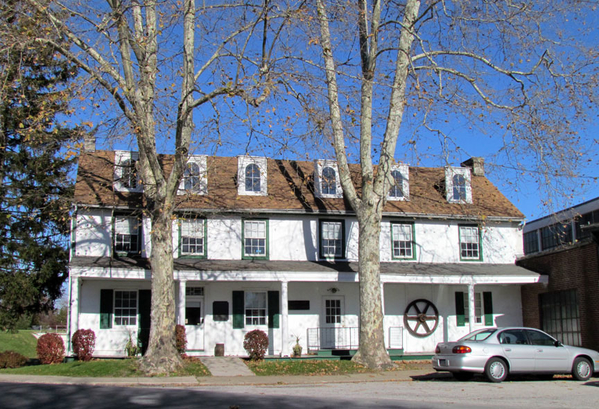
Zercher's Hotel, home of the Christiana Underground Railroad Center In the old image above, it's the building on the right, facing the railroad tracks.
Last March, I finally got back to Christiana, Pennsylvania, a bit east of Lancaster, and was able to visit the museum—even though it had a closed sign in the window. I found a phone number and called; it turns out so few people visit that that they key is left with staff at the machinist business next door, and in minutes someone came to let me in, and left me to explore.
Today, as then, Christiana is a tiny town; its population is just over a thousand, surrounded by farms, with few stores or industries. But for a few weeks in 1851, it was the center of national attention in an era of ferment over slavery and abolition, of resistance to the 1850 Fugitive Slave Act. What some have called the first battle of the Civil War took place there on September 11, 1851 and led to a widely-watched trial and acquittal of anti-slavery fighters on Federal treason charges.
Christiana sits not many miles north of the Maryland border; it was an important point on the Underground Railroad, with many paths crossing in its area, and many local farmers, both white and African American acting as conductors and station masters. The activity only intensified after the new law made it illegal to assist escaping slaves and authorized both federal marshals and slave-owner posses to ‘reclaim’ escapees by force, even in ‘free’ states.
The Gap, Pennsylvania town clock
Nearby, in the town of Gap, which today has a splendid town clock, was the ‘Gap Gang,’ a group of family-related thugs who made a living robbing coaches and wagons and selling tips on escaped slaves they spotted. Early in September 1851, the Gap Gang got in touch with Edward Gorsuch, a Maryland planter, about four men near Christiana who might be the escaped slaves Gorsuch was seeking. They were on the farm of William Parker, himself an escaped slave and prominent abolitionist.
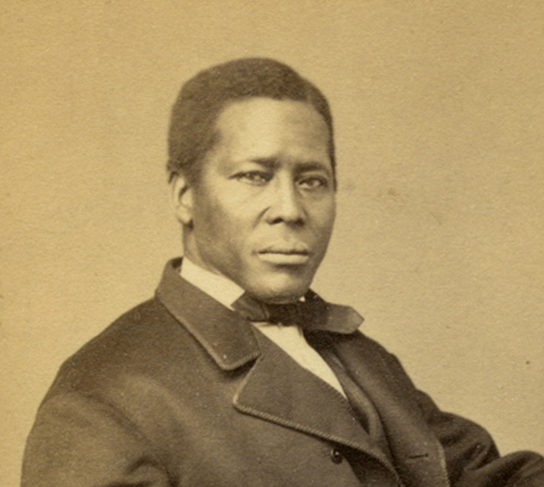
William Parker, a leader of the Underground Railroad and abolitionism in Christiana; a plaque calls him "bold as a lion"
The Gap Gang was not the only organized group in this story. Slave owners who wanted to capture escapees in free states were required to get a warrant from federal court and would then be accompanied by U.S. Marshals. But, in Philadelphia, a group that called itself the Special Secret Committee, spent time watching the courts and sending warnings to those being hunted.
On the morning of September 11, Gorsuch, his son, a nephew and three others, including the Marshal, showed up at Parker’s home, fired shots, and demanded surrender. Parker told them to wait while the family talked. While they talked, as many as 150 neighbors, black and white, showed up, armed. In the confrontation that followed, Gorsuch was killed, and his son wounded; the rest of the raiding party fled. Parker and the escaped Gorsuch slaves left immediately for Canada; they were helped across the border by Frederick Douglass, who had known Parker when both were slaves in Maryland.
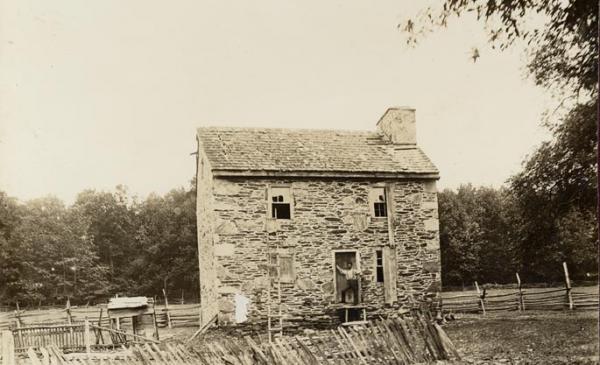
William Parker's house, scene of the battle, as it looked around that time, and shortly before its demolition in 1899. The two men were veterans of the event; the man on right is holding a corn cutter, the weapon he brought at the time.
In the aftermath, 41 local residents, five white and 36 black, were charged with treason. The first to be tried, Castner Hanway, a white miller, was acquitted at trial in Philadelphia after fifteen minutes’ deliberation; his defense counsel was Rep. Thaddeus Stevens, a leader of the anti-slavery Republicans in Congress. Charges were dropped against the others, with the expectation they would be tried for murder in local state courts, but none ever were. Among the spectators at the trial was a family friend of the Gorsuches, a young actor named John Wilkes Booth.
In the aftermath of the trial, headlines across the country spread the story—some in alarm at violence, some cheered by the mass resistance to the Fugitive Slave Act and slavery itself. Even among those who opposed slavery, there were many who also opposed ‘lawlessness’ and violence. Figures as diverse as Frederick Douglass and John Brown were heard from.
On the other side, prominent figures warned that anarchy and an armed fight against slavery was coming—which, of course it was, and the events at Christiana helped move that day forward, to make clear to many that there would be no more compromises over slavery as there had been in 1820 and 1850. Ironically, when the war came, the wounded son, Dickinson Gorsuch, fought in the Union army.
For a seemingly small event, Christiana had a long echo.
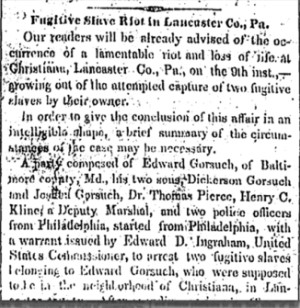
The first issue of the New York Times appeared on September 18, 1851, and the Resistance at Christiana made Page One. Many other newpapers across the nation chimed in; some are quoted in the image above.
Sixty years later, in September 1911, the town remembered the events with an obelisk placed across the square from Zercher’s Hotel, originally the town railroad station, and now the home of the museum, the Christiana Underground Railroad Center. In 1851, the attic of the hotel was used as a holding pen for the arrested, and a room in the hotel was used for a sheriff’s inquest over Gorsuch’s body.
In 2001, it was moved to its present spot, next to the museum. Its four faces bear a variety of inscriptions, including one that enigmatically names Edward Gorsuch and says “Died for Law.”
The museum and the town keep the memory alive each September, with events including period family activities, historical presentations and food trucks. Many of the town’s residents are descended from participants in the events of 1851, and some take part in the celebrations.
Christiana is a short ride away from a wide variety of visitables, including the Central Market in Lancaster, the Pennsylvania State Railroad Museum and its neighbor the National Toy Train Museum and the Strasburg Rail Road, as well as all the authentic and no-way authentic attractions of Pennsylvania Dutch country.

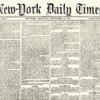

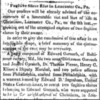
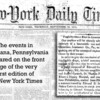


Comments (1)